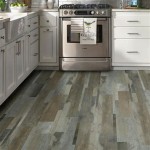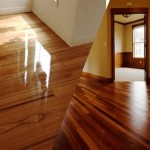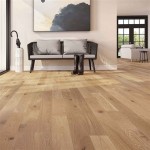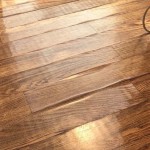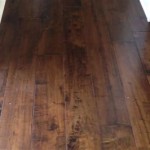Cat Pee On Wood Floor Smell: A Comprehensive Guide to Removal and Prevention
Cat urine on wood floors poses a significant challenge for homeowners. The porous nature of wood allows urine to seep deep into the grain, making the resulting odor notoriously difficult to eliminate. Unlike surfaces like tile or linoleum, where the liquid primarily sits on the surface, wood absorbs the urine, leading to a persistent and unpleasant smell. Addressing this issue requires understanding the chemical composition of cat urine, the properties of wood, and a systematic approach to cleaning and odor removal.
The odor from cat urine stems from the breakdown of urea, a nitrogenous waste product in the urine. Initially, ammonia is produced, contributing to the sharp, pungent smell often associated with fresh cat urine. Over time, bacteria decompose the urea further, producing mercaptans, which are sulfur-containing compounds responsible for a lingering, foul odor. These compounds are particularly persistent and difficult to remove from porous materials like wood.
The severity of the odor and the difficulty in its removal depend on several factors, including the amount of urine deposited, how quickly it’s discovered, and the type of wood flooring. Untreated or unsealed wood is far more susceptible to urine penetration than sealed or finished wood. The duration the urine remains on the floor before cleaning also significantly impacts the depth of penetration and the intensity of the odor.
Identifying the Source of the Odor
The first crucial step in eliminating cat urine odor from wood floors is accurately locating the source. This can be challenging, especially if the incident occurred some time ago. While fresh urine is typically easy to smell, dried urine can be less obvious. Several methods can be employed to identify the affected areas.
One common technique involves using a black light (UV light). Cat urine contains phosphorus, which glows under UV light. Turning off the lights and shining a black light across the floor will reveal areas where urine has been deposited. It's important to note that other substances can also fluoresce under UV light, so the area should be inspected closely and further confirmed by smell.
Another approach involves using one's sense of smell. While this may seem obvious, systematically sniffing the floor, paying particular attention to corners, edges, and areas around furniture, can pinpoint the source. Dampening a clean cloth and gently wiping the floor in suspect areas can help release the trapped odor, making it easier to detect.
For stubborn cases, moisture meters can be employed. These devices measure the moisture content of the wood. Areas where urine has penetrated will typically have a higher moisture content than surrounding areas. This method requires careful interpretation, as spills, leaks, or other sources of moisture can also affect the readings. Identifying the affected areas is a prerequisite for effective cleaning and odor removal, as treating the entire floor is unnecessary and can potentially damage the finish.
Effective Cleaning Methods for Wood Floors
Once the affected areas have been identified, the next step is to thoroughly clean the wood floor. A range of cleaning methods are available, each with varying degrees of effectiveness. The choice of method depends on the severity of the contamination, the type of wood flooring, and the availability of cleaning products. It is essential to first test any cleaning solution on an inconspicuous area of the floor to ensure it does not damage the finish or cause discoloration.
A simple and often effective first step is to use a mild enzymatic cleaner specifically designed for pet urine. Enzymatic cleaners contain enzymes that break down the organic compounds in urine, effectively neutralizing the odor. These cleaners should be applied liberally to the affected area and allowed to soak for the time recommended by the manufacturer. After soaking, the area should be thoroughly blotted dry with clean cloths. It is crucial to avoid rubbing or wiping the area, as this can spread the urine further and potentially damage the wood finish. Multiple applications may be necessary for heavily soiled areas.
For more persistent odors, a solution of hydrogen peroxide can be used. Hydrogen peroxide is a mild oxidizing agent that can help break down the odor-causing compounds in urine. A 3% solution of hydrogen peroxide is typically recommended. The solution should be applied to the affected area and allowed to sit for several hours, or even overnight, before being blotted dry. It is important to note that hydrogen peroxide can lighten the color of wood, so it should be used with caution and tested in an inconspicuous area first. Repeated applications may be necessary to achieve the desired result.
Another cleaning option involves using a baking soda paste. Baking soda is a natural deodorizer that can help absorb odors from wood. A paste can be made by mixing baking soda with water to form a thick consistency. The paste should be applied to the affected area and allowed to dry completely, which may take several hours or even overnight. Once dry, the baking soda should be vacuumed up. This method is particularly effective at absorbing residual odors after other cleaning methods have been employed. However, one should avoid using too much water when creating the paste to prevent further water damage to the wood.
In severe cases, where the urine has deeply penetrated the wood, sanding and refinishing the affected area may be necessary. This involves removing the damaged layer of wood and applying a new finish. This method should be considered a last resort, as it is labor-intensive and can be costly. It is crucial to consult with a professional flooring contractor to determine the best approach and ensure that the refinishing is done properly.
Preventing Future Occurrences
Preventing cats from urinating on wood floors is crucial to avoiding future odor problems. Understanding why cats urinate outside the litter box is essential for addressing the underlying cause. Several factors can contribute to this behavior, including medical conditions, stress, litter box issues, and territorial marking.
Medical conditions, such as urinary tract infections (UTIs) or kidney disease, can cause cats to urinate more frequently and outside the litter box. If a cat suddenly starts urinating outside the litter box, it is important to consult with a veterinarian to rule out any underlying medical issues. Prompt diagnosis and treatment can often resolve the problem.
Stress and anxiety can also trigger inappropriate urination in cats. Changes in the household, such as a new pet or a move, can be stressful for cats. Providing a safe and comfortable environment, with plenty of hiding places and vertical space, can help reduce stress and anxiety. Pheromone diffusers, such as Feliway, can also help create a calming environment for cats.
Litter box issues are a common cause of inappropriate urination. Cats are fastidious creatures and can be particular about their litter boxes. The litter box should be kept clean and scooped regularly. The type of litter can also affect a cat's willingness to use the litter box. Some cats prefer unscented litter, while others prefer clumping litter. It may be necessary to experiment with different types of litter to find one that the cat prefers. The location of the litter box is also important. It should be placed in a quiet, easily accessible area, away from food and water bowls. The number of litter boxes is also a factor. A general rule of thumb is to have one litter box per cat, plus one extra. Cats often dislike sharing litter boxes, and providing multiple options can help prevent inappropriate urination.
Territorial marking is another reason why cats may urinate outside the litter box. Cats use urine to mark their territory and communicate with other cats. This behavior is more common in unneutered or unspayed cats. Neutering or spaying a cat can often reduce or eliminate territorial marking. In multi-cat households, providing each cat with their own resources, such as food bowls, water bowls, and litter boxes, can help reduce competition and territorial marking.
Finally, ensuring adequate access to fresh water can help prevent urinary problems. Dehydration can lead to concentrated urine, which can irritate the bladder and increase the risk of UTIs. Providing multiple water sources, such as water fountains or bowls, can encourage cats to drink more water.
Addressing all of these factors significantly reduces the likelihood of future cat urine accidents on wood floors. Consistent litter box maintenance, environmental enrichment, and regular veterinary check-ups are all essential components of responsible cat ownership and can prevent recurring odor problems.

Cat Pee Smell Out Of Hardwood Floors Top

How To Get Cat Pee Smell Out Of Wood Floors 5 Vet Reviewed Steps Prevention Tips Catster

Dog Scratches Cat Pee On Wood Floors Pete S

How To Remove Pet Urine Stains From Hardwood Floor With Hydrogen Peroxide

How To Remove Pet Stains From Hardwood Floors

What If My Hardwood Floor Has Pet Stains

How To Remove Pet Urine Stains From Wood Floors Guaranteed

Removing Cat Urine Smell From Wood Pee Hardwood Floors 2025

Best Way To Get Rid Of Cat Urine Smell On Wood Floors

Remove Pet Urine On Hardwood Floor
